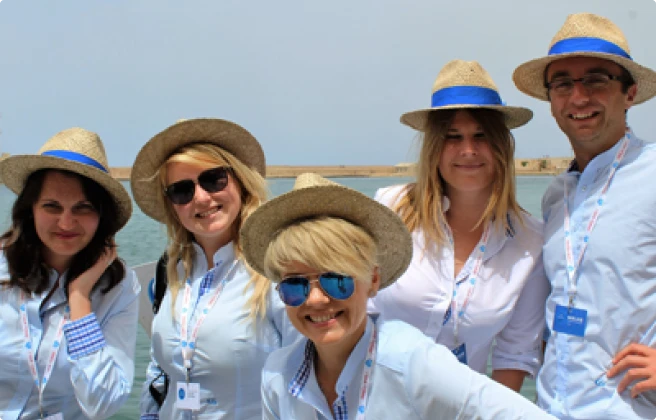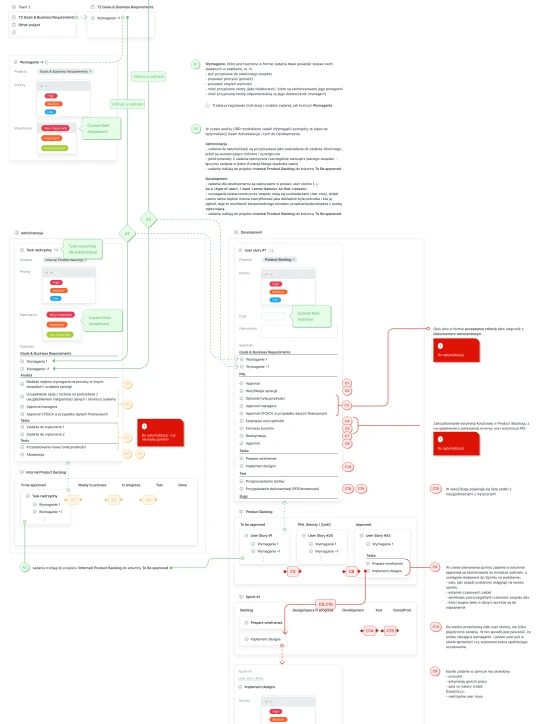
Over the years, the company has transformed its structure many times during the scaling period and mergers of companies. As a result, communication became very complex. Eventually, that led to information silos and misalignment between the goals of each team and the board of directors.
Fortunately, the Grecos leadership had a very agile and modern approach to implementing changes and introducing new tools.
At some point, the CEO realized that the current approach to collaboration was no longer working. He understood that what took him from point A → B (small teams using older-generation communication tools & email) was not enough to get him forward from point B → C (informed, large departments with a common goal clear to all members).
He wanted to check how this work management tool would handle a process that involved almost every department
A RACI matrix is the simplest, most effective means for defining and documenting project roles and responsibilities. Knowing exactly who is responsible, who is accountable, who needs to be consulted, and who must be kept informed at every step will significantly improve your chances of project success.
Together with the management team and IT department, we focused on increasing communication efficiency, reducing unnecessary actions, and optimizing information shared between the right people with few clicks.

Now, the model became fully executable by implementing the whole workflow into the Asana information architecture.
During implementation, we reached several goals:
With such an agile approach, the CEO had a much easier decision to make, whether to introduce Asana to the whole organization or not.
People involved in this process became ambassadors in their teams in the following stages of the transformation: a company-wide audit and implementation of basic work management tactics in Asana.
With that attitude, we had complete freedom in unveiling the real reasons for information silos and eventual roadblocks during the implementation of Asana.
We dug deep into each employee’s problems with a handful of questions. Answering them meant letting go of the ego at times but eventually giving a complete picture of the organization’s roadblocks.
Delegate tasks with the assurance of almost 100% commitment
Organize files inside and outside of Asana
Plan the day and manage personal tasks
In smaller group meetings, managers learned how to adjust the interface to coordinate multiple projects.
We used real-life examples of reports that were copy-pasted to the environment of each manager, further tailoring the knowledge to single-user needs.
Next, we discussed the empathetic way of assigning ad-hoc tasks going both ways (manager and team member) that led to a better understanding of everyday tasks, time estimates, and responsibilities of each person in the organization.
Would you like to learn about the whale process and how we could carry it out in your organization?